| Article ID | Journal | Published Year | Pages | File Type |
|---|---|---|---|---|
| 2011500 | Pharmacological Reports | 2013 | 8 Pages |
BackgroundAlthough nisoxetine has been shown to elicit infiltrative cutaneous local anesthesia, the inhibition of voltage-gated Na+ channels by nisoxetine has not been reported. The aim of this study was to evaluate the effect of nisoxetine on Na+ currents and its efficacy on spinal anesthesia.MethodsIn in vitro studies, the voltage-clamp method was employed to examine whether nisoxetine blocked Na+ currents in mouse neuroblastoma N2A cells.ResultsMepivacaine showed concentration- and state-dependent effect on tonic blockade of voltage-gated Na+ currents (IC50 of 3.7 and 74.2 μM at holding potentials of −70 and −100 mV, respectively). Nisoxetine was more potent (IC50 of 1.6 and 28.6 μM at holding potentials of −70 and −100 mV, respectively). In in vivo studies, after rats were intrathecally injected with nisoxetine and mepivacaine, the dose-response curves were constructed. Nisoxetine acted like local anesthetic mepivacaine and induced spinal anesthesia with a more sensory-selective action (p < 0.05) over motor blockade in a dose-related fashion. Intrathecal 5% dextrose (vehicle) produced no spinal anesthesia. On the 50% effective dose (ED50) basis, nisoxetine elicited more potent spinal anesthesia than did mepivacaine (p < 0.05).ConclusionsOur results showed that nisoxetine displayed a more potent and prolonged spinal anesthesia with a more sensory/nociceptive-selective action over motor blockade, compared with mepivacaine. The local anesthetic effect of nisoxetine could be probably due to the suppression of Na+ currents.
